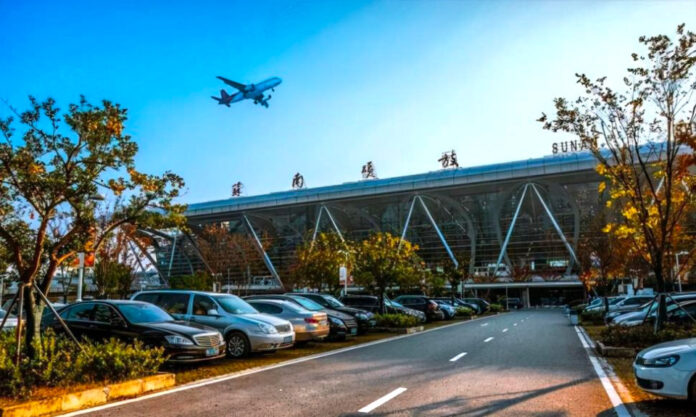Wuxi wants to double its Airport’s passenger traffic by 2025, in trying to address its fundamental problem; why, for the city’s size, economic power and sphere of influence, especially on an international level, is its Airport at best an under performer?
That’s the embarrassing truth that has caused Sunan Shuofang International Airport in Wuxi to this year accelerate its embracing of neighbouring Suzhou, which has no civilian airport of its own.
That’s on account of the situation whereby the Airport’s passenger and cargo throughput is a very long way from matching the economic strength of its location.
Wuxi’s GDP in 2022 was close on ¥1.5 trillion, just ¥200 million less than our provincial capital of Nanjing. Suzhou, on the other hand, is the economic juggernaut of Jiangsu, generating a GDP last year of ¥2.4 trillion.
Looking even further afield, the Suzhou-Wuxi-Changzhou area accounts for 70 percent of Jiangsu’s entire foreign trade. Therein, demand for import/export-aviation logistics has long outstripped supply.
Based on all this evidential data, the annual throughput of Sunan Shuofang International Airport should be 18 million annually.
But it is in fact yet to exceed 8 million.
No wonder the airport wants a piece of the action out of Suzhou. There, out of 13 million residents with no airport, those looking to take to the skies have to make a choice. They might make the journey to Shanghai and take a flight out of Hongqiao, where there are bags of choices by way of destinations.
Or they can head to Wuxi, where flights are, to put it delicately, a little more few and far between. While Hongqiao operates up to three flights every 5 minutes from 06:00 to 23:00 every day, Wuxi sees about one flight every 10 minutes.
Therefore, in November last year, Wuxi and Suzhou signed that being termed a collaborative-development-strategic-cooperation agreement, as The Paper reported on 13 June. Today, we are already seeing the fruits of that effort.
Last month, a “Custom Airport Express” entered service, linking Sunan Shuofang with downtown Suzhou, offering 42 bus services per day and stops en route.
Then there was the opening of a Suzhou City terminal for the Airport, from where, following flight check-in procedures, it takes about 30 minutes for passengers to take a specially-customised route from Suzhou High-tech Zone to the airport.
The post COVID era has also seen international flights on the up. In April, the Airport saw the resumption of its Wuxi-Osaka link after 3 years, while two more daily flights to Hong Kong and Macao were added to the roster in February.
On the infrastructure front, Sunan Shuofang began an expansion project at the start of this year. That’s essential to achieving that goal of reaching 15 million passengers each year, as well as 300,000 tons of cargo throughput by 2025.
It’s ambitious, but the idea has much muscle behind it. Zhao Jianjun, Mayor of Wuxi, is championing Sunan Shuofang’s synergy and integration with surrounding cities; while Wu Guoping, a Representative to the National People’s Congress, went as far as mentioning it during this year’s Two Sessions meetings.
That’s the kind of influence Sunan Shuofang International Airport is going to need if it is to take just 2 years to add another 7 million passengers to its yearly operations. And get out of its really-rather-longterm embarrassment.









